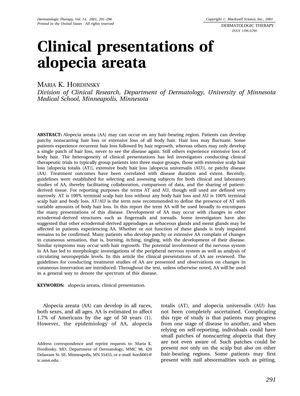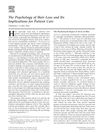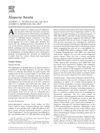Clinical Presentations of Alopecia Areata
December 2001
in “
Dermatologic therapy
”

TLDR Alopecia areata causes varying hair loss patterns, affecting hair, nails, and possibly glands, with treatment outcomes depending on disease duration and extent.
Alopecia areata (AA) presented a range of clinical manifestations, from patchy nonscarring hair loss to complete loss of all body hair. Patients experienced varying patterns of hair loss and regrowth, leading to the classification of AA into three major groups: alopecia totalis (AT), alopecia universalis (AU), and patchy disease (AA). Treatment outcomes were linked to the duration and extent of the disease. Guidelines were established for selecting and assessing subjects in clinical and laboratory studies, promoting data comparison and collaboration. AA could also affect other ectodermal-derived structures like nails and possibly sebaceous and sweat glands, though the latter required further confirmation. Patients often reported changes in cutaneous sensation, prompting investigations into the involvement of the nervous system. The article reviewed AA's clinical presentations, treatment study guidelines, and observations on cutaneous innervation changes.


